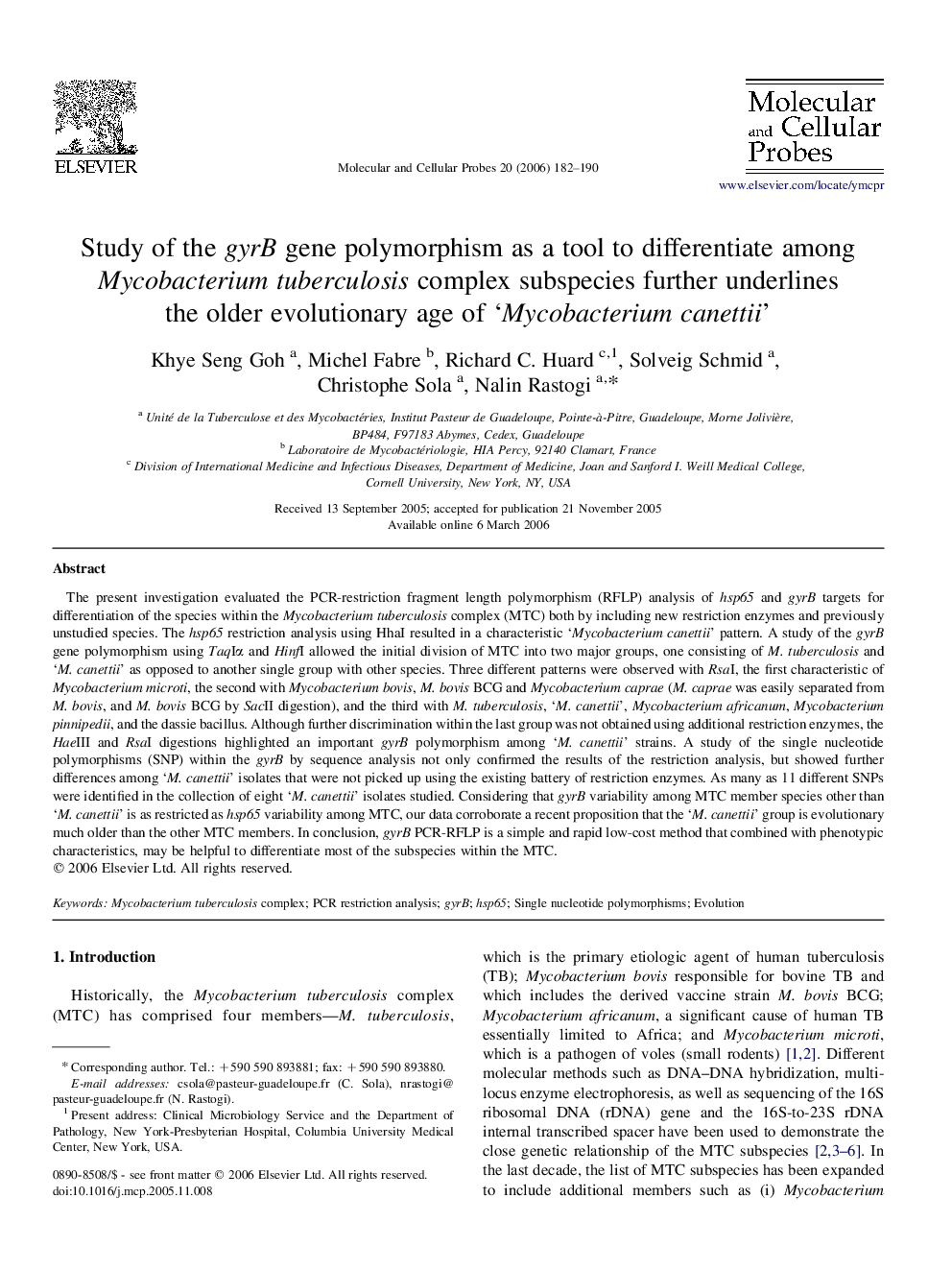| Article ID | Journal | Published Year | Pages | File Type |
|---|---|---|---|---|
| 2200184 | Molecular and Cellular Probes | 2006 | 9 Pages |
The present investigation evaluated the PCR-restriction fragment length polymorphism (RFLP) analysis of hsp65 and gyrB targets for differentiation of the species within the Mycobacterium tuberculosis complex (MTC) both by including new restriction enzymes and previously unstudied species. The hsp65 restriction analysis using HhaI resulted in a characteristic ‘Mycobacterium canettii’ pattern. A study of the gyrB gene polymorphism using TaqIα and HinfI allowed the initial division of MTC into two major groups, one consisting of M. tuberculosis and ‘M. canettii’ as opposed to another single group with other species. Three different patterns were observed with RsaI, the first characteristic of Mycobacterium microti, the second with Mycobacterium bovis, M. bovis BCG and Mycobacterium caprae (M. caprae was easily separated from M. bovis, and M. bovis BCG by SacII digestion), and the third with M. tuberculosis, ‘M. canettii’, Mycobacterium africanum, Mycobacterium pinnipedii, and the dassie bacillus. Although further discrimination within the last group was not obtained using additional restriction enzymes, the HaeIII and RsaI digestions highlighted an important gyrB polymorphism among ‘M. canettii’ strains. A study of the single nucleotide polymorphisms (SNP) within the gyrB by sequence analysis not only confirmed the results of the restriction analysis, but showed further differences among ‘M. canettii’ isolates that were not picked up using the existing battery of restriction enzymes. As many as 11 different SNPs were identified in the collection of eight ‘M. canettii’ isolates studied. Considering that gyrB variability among MTC member species other than ‘M. canettii’ is as restricted as hsp65 variability among MTC, our data corroborate a recent proposition that the ‘M. canettii’ group is evolutionary much older than the other MTC members. In conclusion, gyrB PCR-RFLP is a simple and rapid low-cost method that combined with phenotypic characteristics, may be helpful to differentiate most of the subspecies within the MTC.
